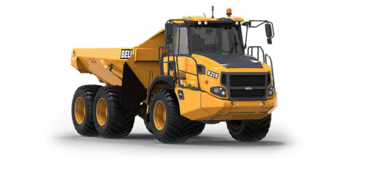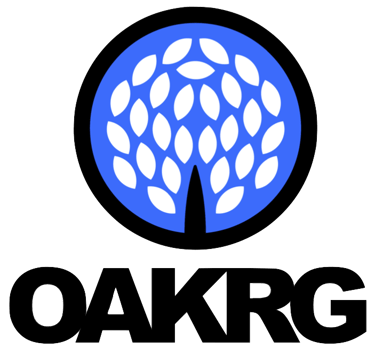Capital Solutions for Mining Projects
Our clients are looking to deploy $2M–$25M+ into mining projects seeking capital solutions. Structures include bridge loans or convertibles, with a path toward public listing or institutional follow-on. Typical deal flow: • Immediate funding • Prep for listing or larger raise • Targeted exit in 2–24 months We prefer listed or near-listing companies but are flexible if fundamentals are strong. Focus is mainly gold/silver, but we’re open to other opportunities. Let me know if we can be of assistance going forward.
7/9/20255 min read


Understanding the Current Mining Investment Landscape
The mining investment market is currently experiencing a significant transformation, particularly driven by robust interest in gold and silver projects. The resurgence in these precious metals is primarily fueled by their perceived value as safe-haven assets during periods of economic instability. Investors are increasingly turning their attention to mining ventures, seeking opportunities that promise high returns. This heightened interest aligns with the global shift toward securing physical commodities, as they tend to perform well against inflation and geopolitical risks.
One key aspect shaping the mining investment landscape is the influx of capital directed towards emerging and established mining projects. Institutional investors, hedge funds, and private equity firms are keenly focused on funding opportunities that exhibit potential for substantial yields. The competitive nature of capital allocation in the mining sector has led to a pressing demand for immediate funding solutions, allowing operators to capitalize on favorable market conditions. As a result, the urgency for financial backing is more pronounced than ever, particularly for projects that aim to explore and develop precious metal deposits.
Moreover, several distinct trends are emerging within the industry. Enhanced technological advancements, sustainable practices, and regulatory changes are influencing investment decisions, compelling companies to adapt to new operational requirements. Investors are increasingly favoring projects that integrate environmentally responsible methods and demonstrate social governance standards. These shifts not only align with evolving investor preferences but also elevate the overall sustainability of the mining sector.
The outlook for mining investments in the coming years remains optimistic, fueled by expected growth in demand for gold and silver, especially as global economies strive for stability. The combination of immediate funding availability and attractive prospective returns positions the mining investment landscape as a fertile ground for both existing and budding projects, paving the way for a dynamic financial ecosystem in this crucial sector.
Capital Structures: Bridge Loans and Convertibles Explained
In the mining sector, financing is crucial for advancing projects through various stages of development, and capital structures such as bridge loans and convertibles are particularly vital. A bridge loan is a short-term financing option that provides immediate funds to a mining company, typically utilized until a more permanent financing solution is established. This type of loan is beneficial for companies needing quick liquidity, often allowing them to cover operational costs or complete necessary developments without delaying progress.
Additionally, bridge loans offer flexibility in terms of capital structure, as they can be tailored according to the specific needs of the mining project. However, potential risks include higher interest rates and the pressure of repayment deadlines, which can strain the financial health of emerging mining businesses. Companies should meticulously analyze their cash flow and operational timelines to mitigate these risks effectively.
Conversely, convertible loans represent another significant avenue for raising capital in the mining industry. These instruments provide investors with the option to convert their debt into equity at a later stage. This capability can be particularly advantageous for mining firms aiming for public listings, as it minimizes immediate financial burdens while also setting the stage for future equity infusion. Convertible loans can attract investors who may prefer a lower-risk entry point, while still providing an opportunity to participate in the potential upside of the mining project as it matures.
As mining companies evaluate their funding strategies, the choice between bridge loans and convertibles should be aligned with their growth objectives and the specific financial landscape. Developing a comprehensive funding strategy is essential for growth, especially when preparing for transitions into more substantial funding rounds through public listings or institutional investors. Understanding the advantages and limitations of each capital structure enables mining companies to position themselves strategically for success.
Typical Deal Flow: Timelines and Milestones
The funding process for mining projects unfolds through a well-defined deal flow, comprising several stages that align with the specific needs and readiness of the project. Initially, immediate funding is often sought to facilitate preliminary exploration and feasibility studies. This phase usually lasts from 3 to 6 months, during which companies engage prospective investors and begin to build rapport. Investors at this stage seek to identify potential risks and the overall viability of the mineral deposit. Effective communication of geological data and early-stage projections plays a critical role in attracting initial investments.
As the project evolves, companies prepare for public listings or larger capital raises. This preparation typically spans from 6 to 12 months, where exhaustive due diligence is conducted. Companies are expected to enhance their prospectus documentation, undertake detailed assessments of mineral resources, and establish competent management teams. Investors become increasingly interested in technical reports, operational plans, and expected timelines for production. Furthermore, strategic partnerships often form during this time, providing essential support and validation that can streamline the subsequent funding phases.
The final phase in the typical deal flow involves exit strategies, which can materialize between 12 to 24 months post-funding. Common exit strategies may include initial public offerings, mergers, or acquisitions. Throughout this stage, investors will prioritize understanding the transformative milestones achieved by the company, such as securing licenses and permits, initiating production, or meeting production-related targets. Clear communication regarding these milestones not only showcases the project's growth potential but also significantly influences investor confidence and long-term commitment to the funding process.
The Importance of Strong Fundamentals and Market Flexibility
Grounded in the complex arena of mining projects, strong fundamentals are essential for attracting investor interest and fostering sustainable growth. Investors should prioritize well-established companies with consistent financial performance, operational efficiency, and a proven track record of management. These attributes serve as indicators of long-term viability, as they reflect the health of a mining operation and its ability to navigate challenges in the market. For investors, understanding the fundamental aspects of a mining company is crucial to making informed decisions that align with their risk tolerance and investment objectives.
Though listed or near-listing companies tend to be favored due to their transparency and reliability, there exists an opportunity for investors to widen their gaze. The mining sector is diverse, encompassing various projects, including those in early development stages, which may not yet be publicly traded. These projects can sometimes present compelling investment scenarios, particularly if they exhibit promising fundamentals alongside innovative approaches or unique geological advantages. Therefore, flexibility in investment strategies allows investors to take calculated risks on lesser-known ventures that could yield substantial returns.
To make prudent investment choices, it is paramount for investors to conduct thorough due diligence. This encompasses not only evaluating the financial health of a mining company but also scrutinizing external market conditions that could impact performance. Factors such as commodity prices, regulatory changes, and geopolitical risks should be meticulously assessed to gauge the potential viability of an investment. A comprehensive understanding of the market climate helps investors align their portfolio with prevailing trends, thereby enhancing opportunities for growth.
Moreover, maintaining an open-minded approach toward various investment avenues beyond traditional gold and silver projects is crucial in today's dynamic mining sector. Exploring opportunities in base metals, rare earth elements, and green technologies can lead to diversification and balance within an investment strategy. Therefore, recognizing the importance of strong fundamentals paired with market flexibility is essential for fostering a resilient and potentially rewarding portfolio in mining investments.


Our clients are looking to deploy $2M–$25M+ into mining projects seeking capital solutions. Structures include bridge loans or convertibles, with a path toward public listing or institutional follow-on.
Typical deal flow:
• Immediate funding
• Prep for listing or larger raise
• Targeted exit in 2–24 months
We prefer listed or near-listing companies but are flexible if fundamentals are strong. Focus is mainly gold/silver, but we’re open to other opportunities. Let me know if we can be of assistance going forward.
Get in touch
Contact OAKRG today to learn how capital solutions can help your business improve cash flow, reduce financial strain, and strengthen working relationships. Let us show you how our flexible financing solutions can turn your accounts into a strategic advantage.
